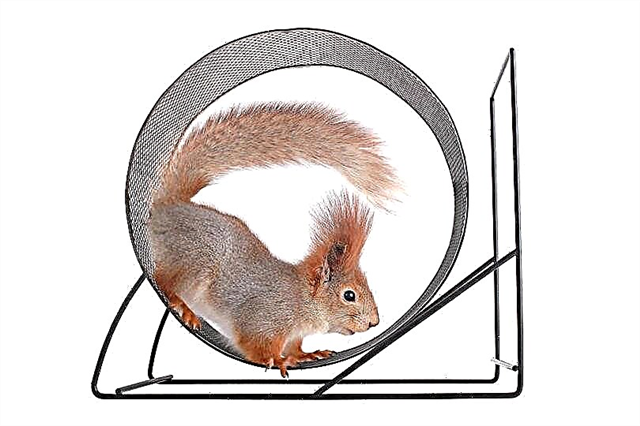
The system designed to turn the trolleybus is divided into two parts: mechanical and electrical. Further in the text for convenience we will call it the gas pedal, quoting the word "gas".
Another subtlety: the concept of “right” and “left” for trolley bus drivers is very specific. The fact is that triple arrows "right-forward-left" in the trolleybus nature does not exist. The feathers of the rotation translation device can either turn the guides to the left or do nothing. This “doing nothing” is called a right turn. Even
Right turn
In the standard state, the arrow is positioned so that the passing trolley will turn right. It is enough for the driver to release the “gas” pedal and drive under it without applying voltage. After the passage of the docking place, you can again "gas" and continue driving.

Left turn
If the driver does not release the "gas" pedal, current is supplied to the arrow, which, after the electromagnetic relay is activated, takes the "left" position. After the trolleybus turned and moved away from the arrow, it again moves to its standard position.
The mechanical rotation is as follows: the guides, which are called feathers on professional slang, are put in line breaks. They have a small angle, approximately 120 degrees. Due to this, the left and right trolleybus rods smoothly rotate in the desired direction of the contact power line.
Interesting fact: There are 5 cities where turning actions are performed the other way around. Turning the arrow to the left is considered standard, and when the current passes, the feathers direct the trolley to the right. These cities are located in Russia and Ukraine: Ufa, Saratov, Dnipro, Kiev, Rivne.
In the standard position, no current is applied to the relay springs. However, when the driver wants to turn left and presses the “gas” pedal, the current reaches the core of the relay, physically aligned with the feathers that he turns left. After the guide rods have passed the section, the trolley continues to move, receiving voltage from the new section. The feathers themselves, meanwhile, are de-energized and the springs return them to their standard right position.
The disadvantage of such a system
This form of rotation, adopted in all countries of the former Soviet Union, is called the current control. It has a very serious drawback - no consumers can be connected to the contact wires supplying voltage to the trolleybus electric motor. Reactive currents that occur during the operation of electric motors can have an effect, as a result of which the side voltage that appears in the network will not allow the feathers to switch to the standard position.
Alternative turning systems
In Vologda, the rotation is carried out using the selector arrow, so named from the English version (selectric switch). The difference is that the contacts in the feathers are beveled at 45 degrees. To drive directly, the driver does not need to take any action, and to turn right, the driver needs to make a sharp turn. The contacts are forced to close and the trolley turns right.
In the same place, in Vologda, one can find switching using a transponder, which is scientifically called inductive. In this case, the driver does not need to spend time switching arrows using electricity. This greatly accelerates the turn. The circuit here works on the principle of remote control. This allows you to avoid trouble when cutting another trolley, reduces the impact of human error.
Automation does not allow feathers to be translated until the heads of the current collectors finish their maneuver and move to a new contact line. Typically, these arrows provide traffic lights that tell the trolley bus driver the current position of the left and right arrows. When cutting is possible, the red light turns on. Control is carried out using an encoded radio signal, which transmits to the arrow the desired signal at the right time.
For many residents of large cities, trolley buses are so rooted in life that they have become commonplace, but experts predict this will not last long. If the transport with internal combustion engines is likely to grow old and disappear in the near future, then a more bright future is prepared for trolleybuses. Perhaps, with an increase in the capacity of the batteries, their horns will fall off, and the power will migrate to the batteries. And this is already commonplace in China, where more than 300 thousand electric buses are already on the routes, the full charge of which takes no more than 2-3 hours.












